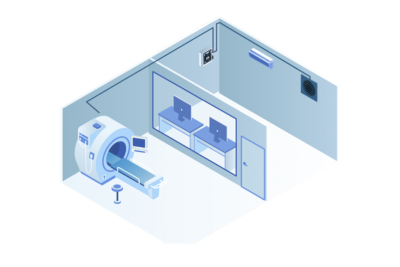Hospitals & Labs
Continuous monitoring of Oxygen in MRI and NMR rooms in hospitals & clinics
Magnetic Resonance Imaging (MRI) machines use a powerful magnetic field to produce 2D or 3D images of the internal human body. Nuclear Magnetic Resonance (NMR) spectroscopy analyzes samples to identify their components at an atomic level. Compressed gases and cryogenic liquids (usually nitrogen, helium and sometimes carbon dioxide) are used to cool the superconducting magnets in both types of machines and also move samples in and out of NMR machines. If a coolant leak occurs, the hazardous gas can displace the oxygen in the room, creating a dangerous situation for the people inside the room. Continuous monitoring for potential oxygen deficiency levels ensures the health and safety of patients and staff.

KEY CONSIDERATIONS
- The DCC-MRI should be mounted outside the MRI room so the strong magnetic field inside the MRI rooms cannot interfere and cause it to malfunction
- Flexible tubing runs from the inlet port fitting on the DCC-MRI to the area where a leak is most likely to occur inside the MRI room and the sampled air is appropriately exhausted through the outlet port through more flexible tubing
- Regular maintenance should be conducted two times per year, with periodic bump tests in between
TARGET GASES
- Oxygen deficiency (O2)

